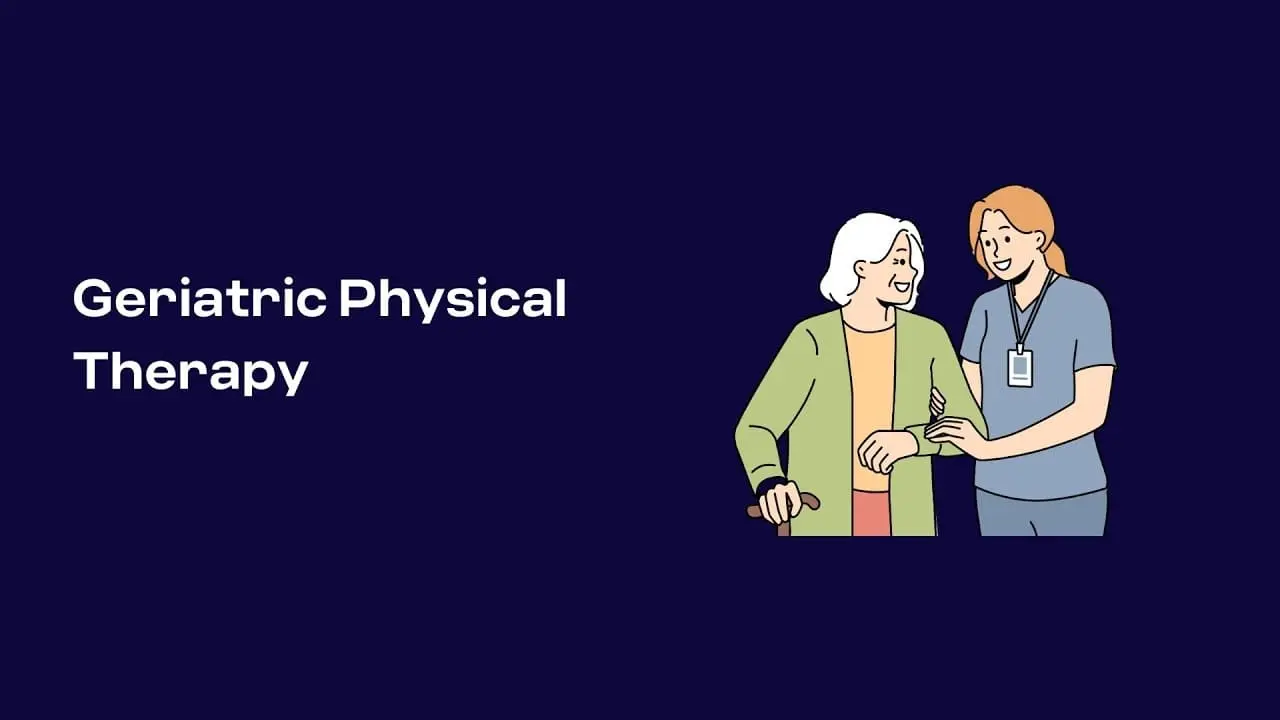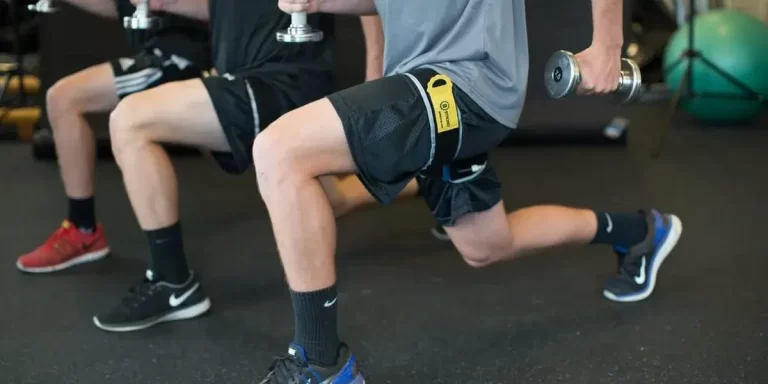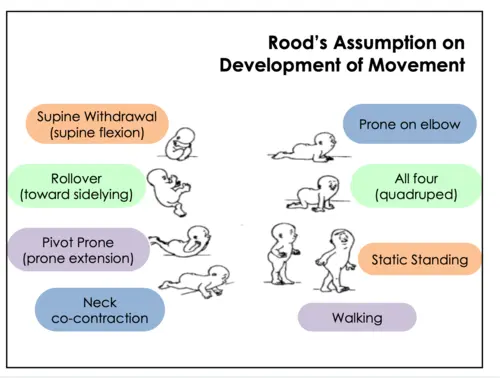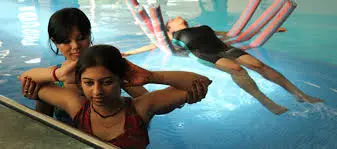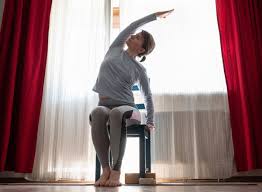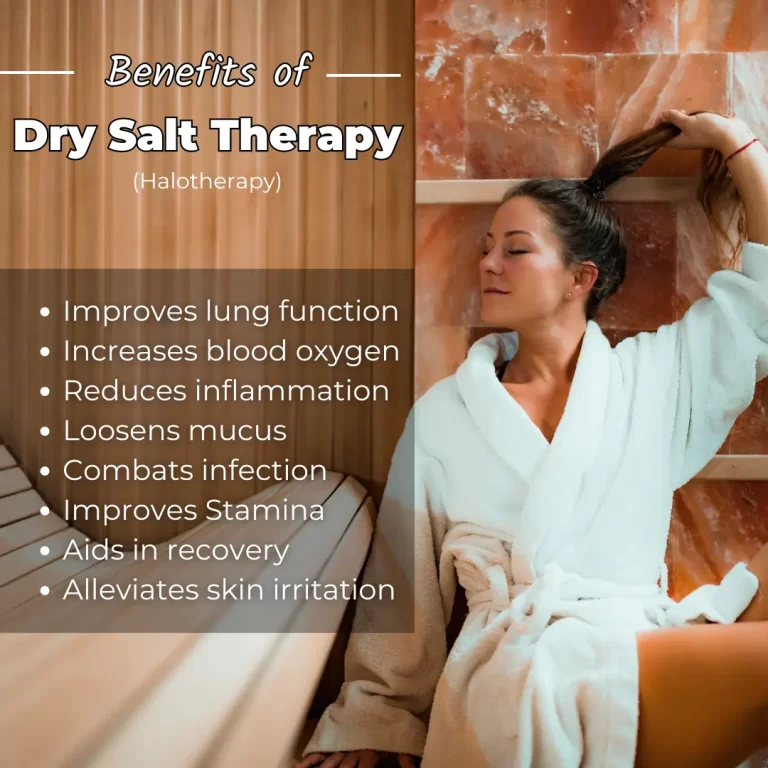Geriatric Physical Therapy
Introduction
Geriatric physical therapy is a specialized branch of physical therapy dedicated to improving the quality of life and functional abilities of elderly individuals. As people age, they may encounter various physical challenges such as decreased mobility, balance issues, chronic pain, and musculoskeletal disorders.
Geriatric physical therapists are trained to address these unique needs and help older adults maintain independence, mobility, and overall well-being.
The freedom of older persons to carry out daily activities and motions, such as standing, walking, climbing, and descending stairs, may be adversely affected by this alteration. Find out which physical treatment options are best for senior citizens.
To deliver care that is best practiced, geriatric physical therapy calls for a certain skill set and understanding.
The skill set necessitates that doctors understand the relevance of the aging continuum—from pathology-influenced to optimal aging—as well as the ways in which psychosocial, environmental, behavioral, accessibility and economic factors impact wellness and optimal health.
Key components of excellent practice include applying this unique skill set in conjunction with evidence-based practice, recognizing the variability seen in older persons, and employing interwoven care systems that have an impact on outcomes.
In order to guarantee that patients receive the care they need, the Academy of Geriatric Physical Therapy published best practice recommendations that are based on six principles.
Person-centered care, anti-ageist ideologies, comprehensive evaluation using reliable outcome measurements, and promotion of physical exercise, evidence-based therapies, and interprofessional collaborative practice.
These guidelines are outlined in this executive summary, along with recommended next steps for every best practice component.
The objectives are to further focus education, resources, and advocacy toward achieving best practice on a larger scale, to encourage individual self-assessment; to promote practice improvement on an individual, facility/system, and communication level.
And to increase collaboration and communication with other healthcare providers regarding global best practices for older adults.
What Is Geriatric Physical Therapy?
A type of physical treatment designed especially for older persons and their particular problems and difficulties is called geriatric physical therapy. Geriatric physical therapy considers the fact that older persons have a decreased tolerance for physical exercise, a tendency to become less active with time, and a decline in muscle strength, coordination, and response speed.
Unlike other forms of physical therapy, geriatric physical therapy focuses more on enhancing older persons’ strength and endurance to support them in the following ways:
- Staying busy
- Keeping deconditioning (reversing prior conditioning) from happening
- Keeping muscles from fading away (known as atrophy)
- lowering the risk of falls and the injuries they cause
- Retaining autonomy in carrying out daily tasks
There are several contexts in which geriatric physical therapy can be administered, including:
- clinics and hospitals that treat outpatients
- Assisted living facilities and inpatient healthcare facilities, such as nursing homes and rehabilitation centers
- At home, which is particularly useful for people who struggle with mobility and find it difficult to leave the house
Physical therapy may also be entirely or partially financed by state-sponsored Medicaid plans and private insurance plans for older persons who are not eligible for Medicare, provided that the plan is medically necessary.
Additional Senior Rehabilitation
In order to help older persons regain their health and physical function at their best, further rehabilitation programs include:
- Treatment for neurological diseases such as multiple sclerosis, Parkinson’s disease, brain traumas, spinal cord injuries, strokes, and physical therapy
- Following a heart attack or heart surgery, cardiac rehabilitation aims to enhance cardiac functions and restore endurance.
- Occupational therapy can help regain the ability to use one’s hands and fine motor control to carry out daily tasks.
Stretches and Equipment for Seniors
In order to assist with activities and movements and prevent general deconditioning, geriatric physical therapy often consists of a variety of exercises that increase strength, flexibility, endurance, and balance. Typical exercises consist of:
- Stretches for the lower body, with a focus on the hamstrings, hip flexors, and lower back, can help to maintain optimal joint alignment and mobility while preventing stiff joints or taut muscles from impairing appropriate muscle activation.
- endurance training on cardiovascular equipment, such as treadmills and stationary bikes, to maintain good heart and lung health and to increase circulation
- Leg lifts, sit-to-stands, squats, step-ups, and bridges are examples of lower-body strengthening exercises that focus on the glutes and quads (the muscles in the thighs and buttocks) to stabilize strength.
- Static balancing exercises on level and uneven surfaces, weight-shifting exercises, marching, and tandem walking heel-to-toe are some of the balance exercises that can help you maintain your equilibrium when standing, walking, and changing directions.
Exercises using body weight are part of geriatric physical therapy, which helps with mobility. When using equipment, light weights or bands are typically the only options available to create additional resistance without putting too much strain on joints.
Tips for Geriatric Physical Therapy
All ages should engage in physical activity, but older persons over 65 should do so more so to avoid deconditioning and to preserve their functional strength, endurance, and range of motion for daily tasks.
For older persons, an increased sedentary lifestyle (long stretches of sitting or lying down) can swiftly result in chronic discomfort, low activity tolerance, weakness and muscle atrophy, and an increased risk of falls.
Even a modest amount of physical activity, such as strolling around your home or doing some light housework or cooking, should be the goal for adults 65 years of age and above.
It is recommended to engage in strength, balance, and flexibility activities on at least two days each week.
Over the course of a week, you should also try to get in at least 150 minutes of moderate-intense exercise. Walking at a moderate pace, hiking, aerobics, biking, dancing, sports, and leisure activities are examples of moderately intense physical exercise.
Geriatric Speech Therapy
Normal aging also brings with it changes to speech, language, memory, and swallowing. Furthermore, problems with these tasks can also be brought on by certain illnesses like dementia, Parkinson’s disease, and stroke. SLPs, or speech-language pathologists, can be very helpful in treating these changes, whether they are caused by illnesses or the natural aging process.
What are Common Injuries in Geriatric Patients?
Seniors frequently sustain injuries, in part because as they age, their bones lose density and become more prone to fractures. As individuals get older, their muscles also atrophy and alter, making it harder for them to support the bones as they once could. A painful injury like a cartilage rip is more likely to occur when there are alterations in the cartilage that cushions the joint between two bones.
Among older adults, the following injuries and impairments are most prevalent:
- Fractures
- Joint Pain
- Knee Pain
- Back Pain
These disorders frequently require professional intervention and are brought on by a combination of aging-related changes, weakness, and/or inadequate care. Our physical therapists at Twin Boro offer specialized geriatric rehabilitation to assist patients in regaining function and mobility.
Summary
The goal of geriatric physical therapy is to assist senior citizens in building the muscle strength necessary to carry out daily activities including walking, climbing stairs, and changing postures. Therefore, geriatric physical therapy can assist older persons in maintaining their independence and avoiding other diseases like muscular atrophy that can result from inactivity.
FAQ
How does geriatric physical therapy help older adults?
Geriatric physical therapy assists senior citizens in regaining the muscle strength, balance, and coordination necessary to enhance their mobility and overall functioning, as well as their independence and capacity to carry out daily duties.
What exercises are good for older adults?
Good workouts assist older persons in maintaining the strength, balance, stability, and power needed to perform daily tasks like walking, climbing stairs, and getting out of a chair. The quadriceps and glutes are two examples of particular muscle groups that could be addressed. Many exercises, such as standing and sitting in a chair, step-ups, bridges, clamshells, leg lifts, and balancing exercises, are used to activate them.
What exercises should older adults avoid?
Older persons should refrain from engaging in physically demanding activities that require heavy lifting and high impact in order to prevent injury. Exercises are to be done carefully and gently. Additionally, in order to promote appropriate joint movement and muscle activation without placing stress on muscles, tendons, or joints, they should be performed with simply body weight or with mild resistance.
What is geriatric physical therapy?
Geriatric physical therapy assists senior citizens in regaining the muscle strength, balance, and coordination necessary to enhance their mobility and overall functioning, as well as their independence and capacity to carry out daily duties.
What is the role of physiotherapy in geriatric patients?
A vast range of issues pertaining to the elderly are addressed by geriatric physical therapy. As people age, they may have a variety of ailments, including but not exclusive to the following: hip and joint replacement, cancer, osteoporosis, arthritis, Alzheimer’s disease, balance issues, incontinence, etc.
What is the treatment of geriatric care?
Geriatric care management combines medical and mental health services with other essential programs and housing, home care, nutrition, help with daily living tasks, socialization, and financial and legal preparation (e.g., trusts, banking).
What are the benefits of geriatric physical therapy?
Geriatric physical therapy can lower the risk of falls by teaching home safety and providing balance training. Enhanced Independence: Geriatric physical therapy can assist older persons preserve and enhancing their independence and living at home by enhancing mobility, lowering pain, and preventing falls.

